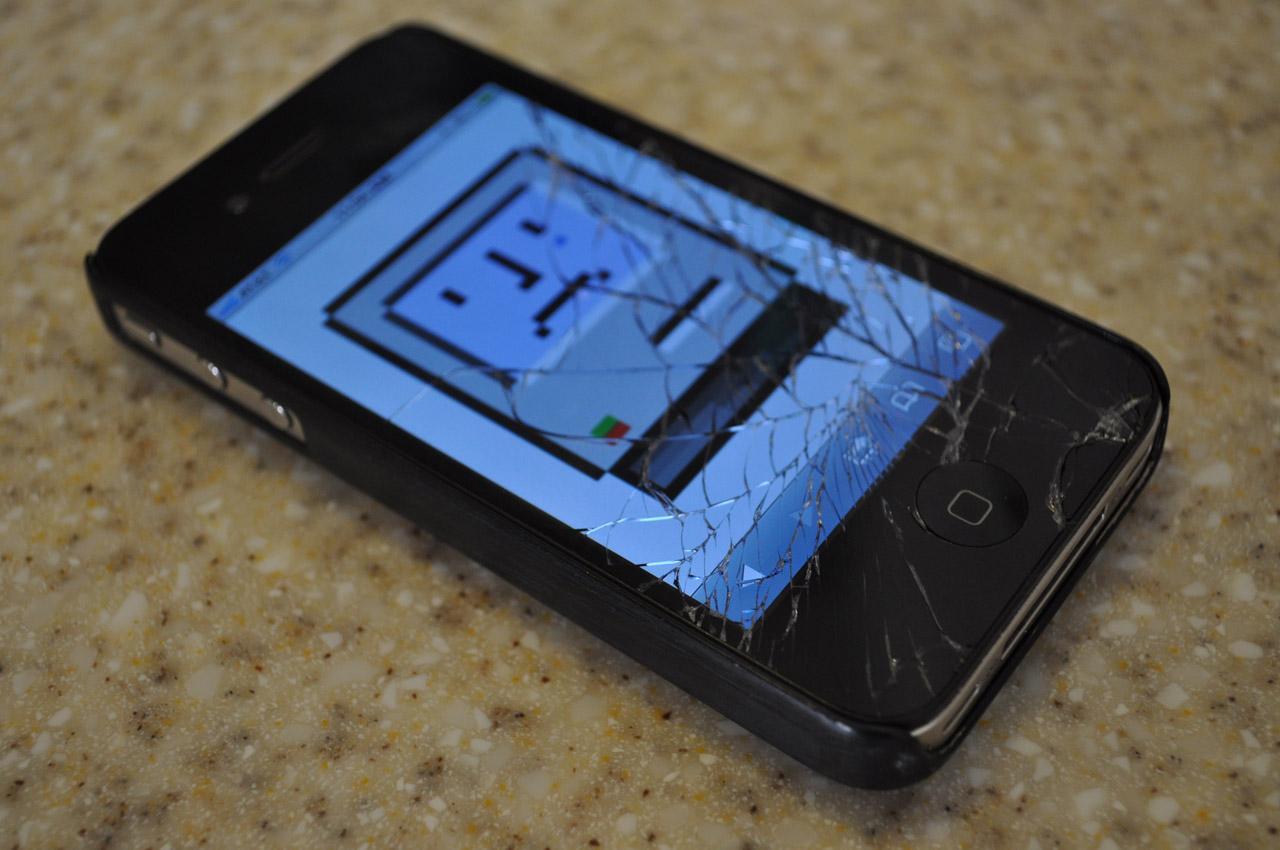
Two years ago, when Steve Jobs took the stage and announced the iPhone 4 would sport two glass panels instead of the typical one, a lot of people we skeptical. We'd seen metal and plastic used generously in phone chassis, and we've since seen a couple phones made of wood and bamboo. But glass was always a questionable material to be used in a cell phone, simply due to its fragile state.
If you drop a phone made of metal or plastic, sure, it might suffer some gruesome damage. It might get some gnaw marks from the pavement or unsightly scratches. It could even bend. I dropped a BlackBerry Curve once and it landed on the corner. When it hit the ground, the only damage it sustained was a twisted frame – it went from roughly rectangular to a parallelogram. Surprisingly, it still worked perfectly fine for several months. And with damages such as these, you can generally pick up the device, blow or wipe the concrete crumbs from it and keep on keepin' on.
With a phone that is composed mostly of glass, however, this is not always the case. Instead of bending or bouncing back upon impact, glass typically likes to shatter or crack, thanks to it being much more rigid. This doesn't automatically mean the device will never work again, but if you continue using a phone with a shattered display or back, you run the risk of slicing a finger open, and repairs can be relatively expensive (upwards of $100). It's worth noting that this can happen just as easily with a phone made out of your more typical materials – they have glass covering their displays, too. But the iPhone has two, large glass panels instead of one, giving it a much higher propensity of cracking or shattering.
You would think that after all of the busted back panels and shattered iPhones that Apple would rethink their choice in materials for future devices, right? Maybe they would consider using less glass. Wrong. If a recent patent filing is any indication, they may be looking in the other direction. Michael Gorman of Engadget reports that Apple "is considering crafting portable computing devices out of glass." The patent application describes a "substantially seamless enclosure ... extruded in its entirety with glass material."
The idea here is obviously not durability. That's not to say that Apple wouldn't use a more structurally sound, chemically altered glass material such as Corning's Gorilla Glass, which would certainly cut down – not stop entirely – shattered phones. But the noted benefit of a phone constructed of a seamless glass tube would be stronger signals from wireless radios and an "aesthetically pleasing" design.
Be careful not to get your hopes up, though, as this is only a patent application. The figures provided in the filing show an original iPod Nano-like device, not a modern iDevice. Apple may never put this technology to use. But it would certainly stir the crowd if they did. However, the question remains: who would be interested in an entirely glass phone? And is it worth the risk?
Well, for starters, the "aesthetically pleasing" part is totally subjective. I imagine an entirely glass phone such as what is described in the patent application to look a lot like Nokia's signature polycarbonate phones, just a little more glossy. That said, there is not a doubt in my mind that an all-glass phone would feel great in the hand. And most people will end up carrying it in a case anyway, so that "benefit" is questionable to begin with.
As for getting the most out of wireless signals, which is clearly important for mobile devices, I think there are better ways to do this. Again, Nokia's polycarbonate material feels and looks nice, doesn't interfere with wireless connectivity any more than I imagine glass would and is structurally sound. No material used in a smartphone can survive butterfingers for too long. But I would assume polycarbonate and plastic are among the top. Glass – even Corning's Gorilla Glass – can only take so many blows before cracking into a million pieces.
I've been carrying an iPhone almost continuously since the iPhone 4 made its way to Verizon in February of last year. It being wrapped in two sheets of glass has never bothered me too terribly much. I use carry it naked all the time. Now, after several close calls, I always have it in a case. Luckily, I have never busted one up too bad (knock on wood), but both the iPhone 4 and 4S have quite a few scratches. That very iPhone 4 has been passed on to someone else, who chose to always carry it in an Otterbox case. That iPhone 4 now has a shattered display. So cases aren't perfect either.
I can't say that I would completely shy away from an all-glass phone. I'm a sucker for beautiful design and things that are different. And I'm a glutton for punishment; I never purchase protection plans. I will say, however, that I would be very wary of an all-glass iPhone, as anyone should be. Maybe I would just carry it in an Otterbox Oh Snap! series case.
What say you, folks? Is an all-glass phone tempting? Scary? Would you consider buying one? Or would it force you to leave iPhone behind for something a little more ... durable?